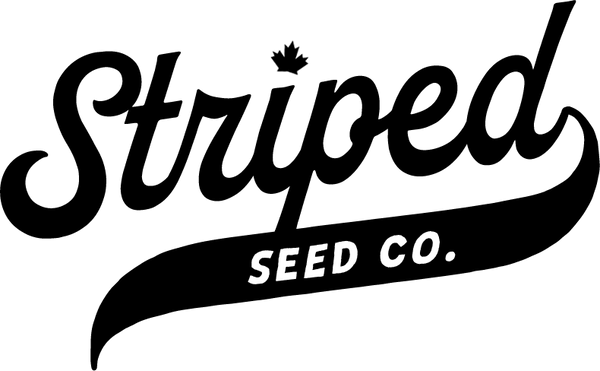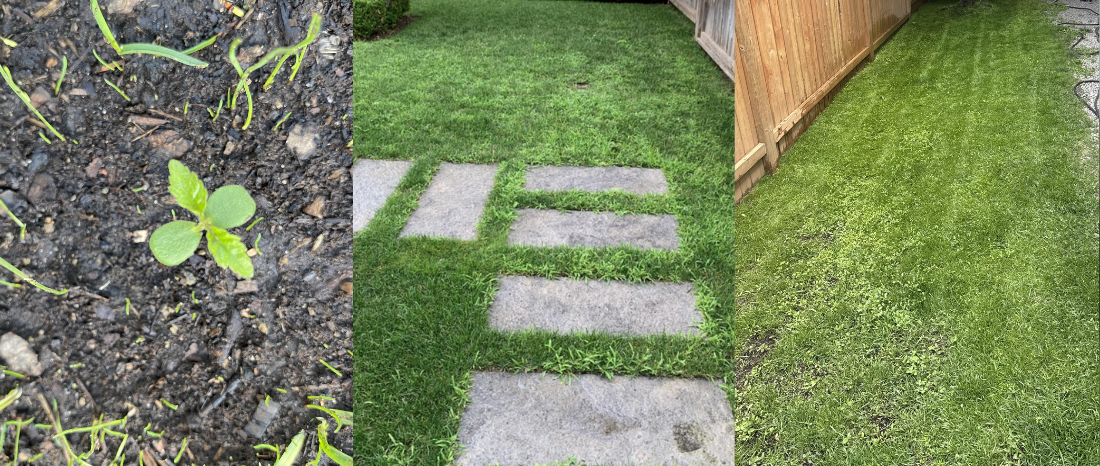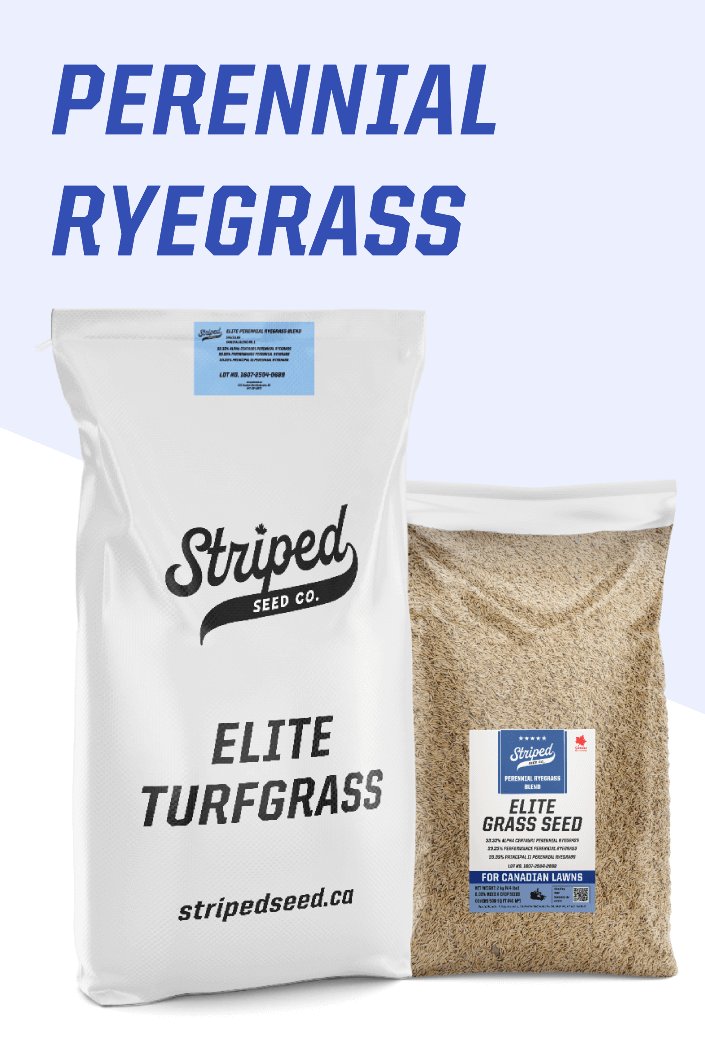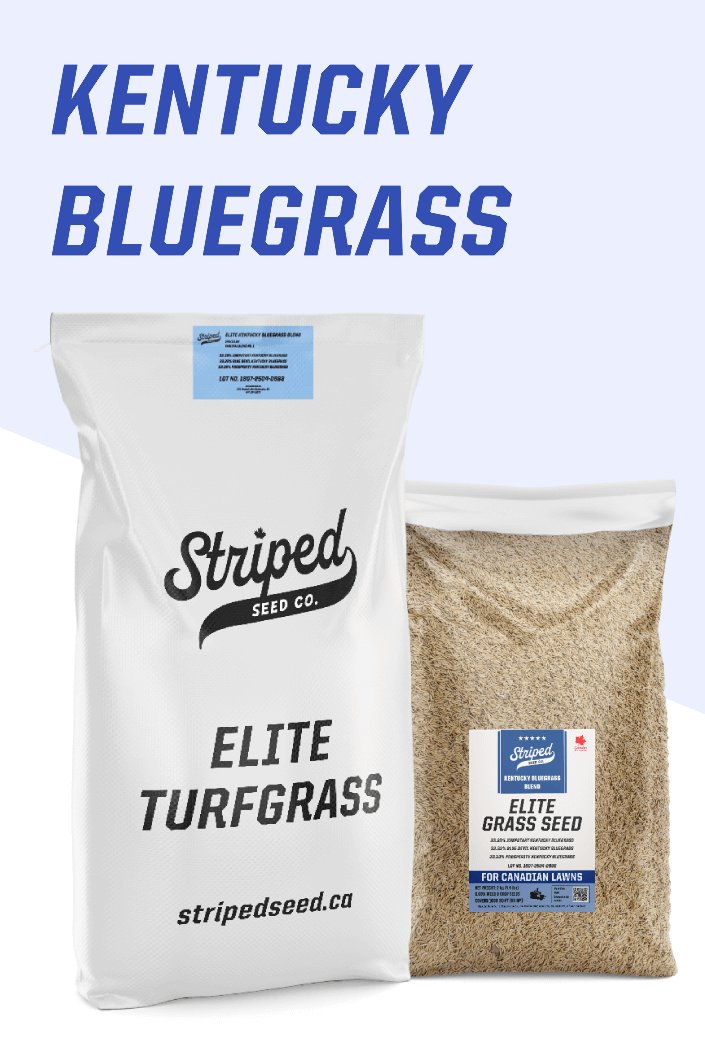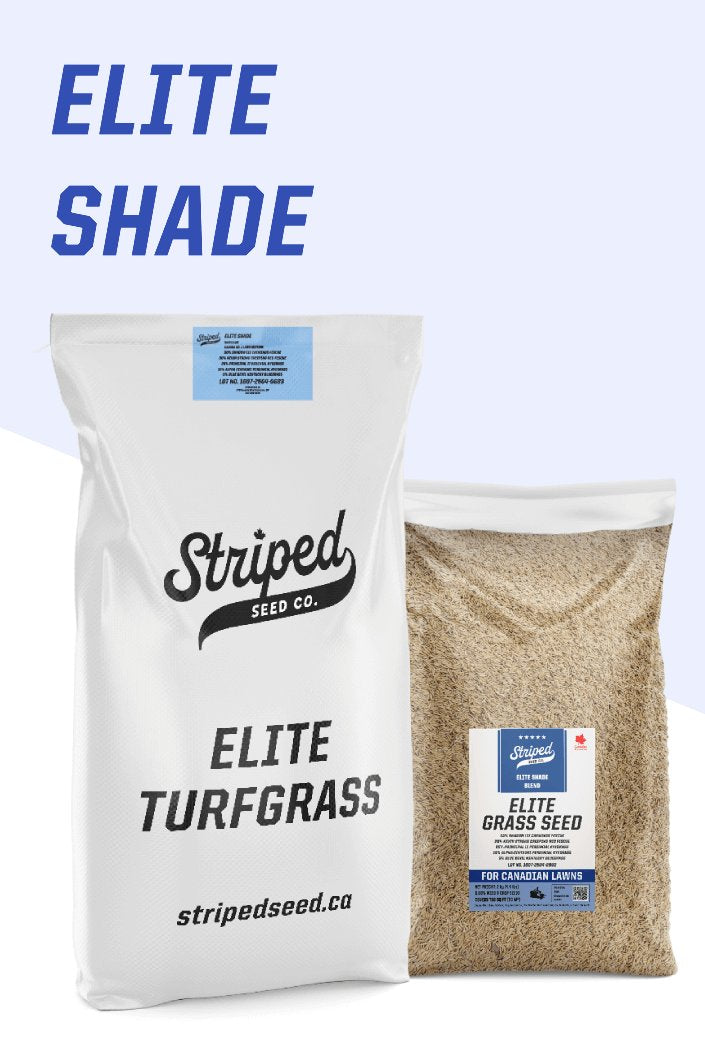If you’re in the middle of researching grass seed options and you’re trying to separate hype from reality, you’re not alone. Maybe you’ve come across a Reddit thread or Facebook comment suggesting that some grass seed brands—maybe even Striped Seed Co.—“contain weeds.”
And now you’re wondering:
Can that actually happen? How would you even know? And is it something to worry about?
This post is here to clear things up.
We’ll walk through why weeds can show up during any seeding project, even if the seed is clean and certified. We’ll also explain how certified seed is tested for purity, what those standards really mean, and why no bag of grass seed—no matter how premium—is a magic shield against all weed pressure.
If you’re the kind of homeowner who cares about getting it right the first time and wants to feel confident in the seed you choose, this is for you.
Let’s break it down.
Why Weeds Can Show Up During a Seeding Project — Even With High-Quality Seed
If you’ve ever seeded a lawn and noticed weeds popping up shortly after, you’re not alone. It’s a common frustration, and understandably, people sometimes wonder if the seed they used was to blame. After all, when something new appears right after you apply grass seed, it’s easy to assume the two are connected.
But in most cases, the weeds didn’t come from the bag — they came from your lawn, your soil, or your environment. The conditions created during seeding — warm soil, frequent watering, and open ground — also happen to be ideal for weed seeds that were already there, just waiting for a chance to grow.
Sources of Weed Pressure During Lawn Seeding
Here’s an estimated breakdown of where weed pressure during a seeding project typically comes from.

These percentages are based on publicly available university extension research, field experience with certified seed, and real-world observations of common weed emergence patterns in home lawn seeding projects. Actual weed pressure may vary depending on lawn history, materials used, and seeding practices.
Dormant Weed Seeds Already in Your Soil (≈49%)
The single biggest source of weeds during a seeding project is your own soil. Over time, weed seeds from crabgrass, dandelions, clover, and hundreds of other species build up in the top layer of soil. They sit there quietly—sometimes for years—waiting for the right conditions.
When you rake, dethatch, topdress, or disturb the lawn in any way during seed prep, it's possible to bring those buried seeds closer to the surface, where they finally get access to sunlight, warmth, and moisture. Once that happens, they wake up and grow.
- ✅ University-backed: According to Penn State Extension, “cultivation of the soil can bring buried weed seeds to the surface, enabling germination and weed establishment” (source).
- ✅ Real-world impact: One crabgrass plant can produce up to 150,000 seeds in a single season, and those seeds can remain viable in the soil for years.
In other words: if you’ve ever had weeds in your lawn before, unfortunately you’ve got weed seeds waiting in the soil.
Favourable Seeding Conditions That Also Favour Weeds (≈20%)
A freshly seeded lawn creates ideal conditions for both grass and weeds to grow: bare soil, regular moisture, and warming temperatures. Unfortunately, most weed species germinate faster than turfgrass — especially:
- Crabgrass in warm-season seeding
- Broadleaf weeds like purslane, chickweed, or spurge in moist soil
- Annual grassy weeds like goosegrass or foxtail
If your new grass takes a while to establish, weeds can move in first and take advantage of the open space.
- ✅ University of Missouri Extension notes: “Many weeds can germinate and outpace grass seedlings if irrigation and timing are not optimized” (source).
Imported Materials: Topsoil, Compost, or Peat Moss (≈15%)
Another overlooked source of weed pressure is the materials you add during your project. While topsoil, compost, and peat moss can all help create a better seedbed (and we still recommend using them), they can also introduce unwanted weed seeds.
- Topsoil: Often harvested from fields or construction sites, bulk topsoil can contain dormant seeds or active weeds. Michigan State Extension confirms that “all topsoil will contain some weed seeds. There is no way for even the most diligent seller to remove these”
- Compost: Unless it’s fully “hot-composted” at high temperatures, some weed seeds can survive the process. Purdue Extension notes: “Finished compost is free of pests and weed seeds only [if] it has been produced under conditions sufficient to kill weed seed”
- Peat Moss: While typically low in contaminants, peat moss can sometimes harbour weed seeds depending on how and where it was packaged or stored.
External Introduction: Wind, Shoes, Pets, and Tools (≈15%)
Weed seeds are light, mobile, and opportunistic. They can:
- Blow in from nearby yards or open fields
- Hitch a ride on your shoes, tools, pets, or even birds
- Be reintroduced by wheelbarrows, hoses, or anything that moves between lawns
Even if you’ve created the perfect seedbed, nature doesn’t always respect the fence line. This is one of the reasons you can do everything “right” and still see a few unwanted visitors in your lawn.
Contamination in Certified Grass Seed (<0.5–1%)
Yes, it’s technically possible for a small number of weed seeds to be present in any bag of grass seed — but certified seed (and therefore our seed) goes through rigorous testing and cleaning to minimize this risk.
You’ll learn more about that in Section 2 below, but for now, know this:
- Certified seed must meet strict purity standards
- Every lot is tested and verified before it’s sold
- Weed contamination in certified seed is usually less than 0.5% by weight — and often close to zero
So while no product is perfect, if you’re seeing a significant number of weeds in your lawn, it’s almost never the seed itself that’s to blame.
What Certified Grass Seed Actually Means — And How It Helps Minimize Weeds
While most weed pressure during a seeding project comes from your soil, environment, or prep materials, your choice of seed still plays an important role.
That’s where certified seed comes in. At Striped Seed Co., we only use certified elite-grade seed—and that’s not just a label. It’s a rigorous, independently verified standard that helps minimize the chance of introducing weeds through the seed itself.
Here’s how certification works, what it guarantees, and why it matters when you’re aiming for the cleanest possible start.
What Is Certified Seed?
Certified seed is seed that has been tested and approved by an independent certification agency, such as the Canadian Seed Growers’ Association (CSGA) or Association of Official Seed Certifying Agencies (AOSCA) in the U.S.
To be certified, a seed lot must be:
- Grown under controlled, inspected field conditions
- Cleaned and processed in certified facilities to preserve varietal purity.
- Independently tested for factors like purity, germination rate, weed seed presence, and absence of prohibited noxious weeds.
- Tagged and traceable, so every bag can be traced back to its production and testing documentation
Only seed that meets these standards earns the blue tag in Canada or the official certified seed label in the U.S.
How Certification Reduces Weed Seed Content
Certified seed must meet specific purity standards — meaning it’s tested for, and must stay below, certain limits for other crop seeds and weed seeds.
In Canada, those limits are regulated under the Seeds Act and Seeds Regulations, which set thresholds for:
- Weed seed content by weight
- Noxious weed presence (must be zero)
- Other crop contamination
For example, a certified elite-grade turfgrass seed lot in Canada must contain:
- 0.0% noxious weeds
- Extremely low % of total weed seeds by weight (typically <0.5%)
And those numbers aren’t self-reported — they’re verified by independent labs as part of the certification process.
Why That Small Edge Matters
That doesn’t mean certified seed guarantees a weed-free lawn—no seed can eliminate the weed pressure from soil, wind, tools, and the environment.
But what certified seed does is confidently remove one of the biggest unknowns: what’s actually in the bag.
- No hidden noxious weeds.
- No hidden “surprise” seed species.
- Guaranteed high purity.
- Independent verification—so you’re not relying on claims alone.
What to Watch For If You’re Comparing Seed Brands
If you're comparing options and trying to avoid problems down the line, here are a few tips:
- Avoid blends that don’t list cultivars — vague terms like “premium sun & shade” with no data may indicate low transparency. Even though official certification tags are usually removed when large, bulk quantities of certified seed are repackaged into small bags (like ours), if a company lists the cultivar name on the bag tag or label, it usually means it's certified and you have the ability to look it yourself if you like.
- Check for weed seed guarantees — certified seed labels will show the weed seed content, germination rate, and other crop content by law.
Final Thoughts
Weeds showing up after a seeding project can be frustrating — but in most cases, they aren’t coming from the seed itself. They’re the result of dormant seeds in your soil, environmental conditions, or materials used during prep.
That’s why starting with certified seed matters. It’s independently tested to minimize weed content and give your lawn the cleanest possible starting point — even if it can’t control every factor in your yard.
Understanding where weed pressure really comes from helps you set realistic expectations and choose products you can trust.
